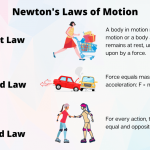Measuring a Nation’s Economic Output: Calculating National Income
National income is a crucial economic indicator that measures the total value of goods and services produced within a country’s borders during a specific period. It provides insights into a nation’s economic health, growth, and living standards. There are several methods to calculate national income, each with its own advantages and disadvantages.
The Expenditure Approach
The expenditure approach calculates national income by summing up the total spending on final goods and services in the economy. It includes four main components:
- Consumption (C):
Spending by households on goods and services.
- Investment (I): Spending by businesses on capital goods, such as machinery and equipment.
- Government Spending (G): Spending by the government on goods and services.
- Net Exports (NX): The difference between exports and imports (NX = Exports – Imports).
National Income (NI) = C + I + G + NX
The Income Approach
The income approach calculates national income by summing up the total income earned by factors of production (labor, capital, land, and entrepreneurship) within the economy. It includes:
- Wages and Salaries (W): Income earned by labor.
- Rent (R): Income earned by land.
- Interest (I): Income earned by capital.
- Profits (P): Income earned by entrepreneurship.
National Income (NI) = W + R + I + P
The Value-Added Approach:
The value-added approach calculates national income by summing up the value added at each stage of production. Value added is the difference between the value of output and the value of intermediate inputs used in production.
National Income (NI) = Total Value Added
Key Considerations:
- Double Counting: To avoid double counting, only the final value of goods and services is included in the calculation. Intermediate goods, which are used in the production of other goods, are not included.
- Underground Economy: The underground economy, which consists of economic activities that are not reported to the government, is often excluded from national income calculations.
- Non-Market Activities: Activities that are not exchanged for money, such as household production, are generally not included in national income calculations.
Limitations of National Income:
While national income is a valuable indicator, it has some limitations:
- Distribution: National income does not provide information about how income is distributed among different groups in society.
- Well-being: National income does not necessarily measure the overall well-being of a population, as it does not account for factors such as quality of life, environmental sustainability, or social inequality.
- Economic Activity: National income may not accurately reflect economic activity in certain sectors, such as the informal economy or the digital economy.
Despite its limitations, national income remains a crucial tool for analyzing economic performance and making informed policy decisions. By understanding the different methods of calculating national income and their limitations, policymakers and economists can gain valuable insights into the health of a nation’s economy.


